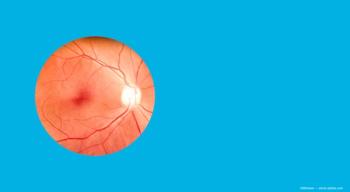
Ocular toxoplasmosis common cause of ocular inflammation
When and how do you use laboratory testing in patients with suspected toxoplasmic retinochoroiditis? What patients require no testing? When and how do you use testing of intraocular fluids? What approach should be taken in routine clinical practice?
Editor's Note: Nearly one-third of the world's population is infected with Toxoplasma gondii. It is not surprising, therefore, that toxoplasmic retinochoroiditis is both the most prevalent form of posterior uveitis and the most frequent form of infectious uveitis in non-immunocompromised patients.
Experts comment on aspects related to the diagnosis and management of this common cause of ocular inflammation.-Emmett T. Cunningham Jr.,MD, PhD, MPH
When and how do you use laboratory testing in patients with suspected toxoplasmic retinochoroiditis? What patients require no testing? When and how do you use testing of intraocular fluids? What approach should be taken in routine clinical practice?
A focal retinochoroiditis with an adjacent or nearby retinochoroidal scar and moderate to severe vitreous inflammation would, for example, be expected to have a positive anti-T gondii IgG titer and a negative IgM titer, whereas the same lesion in the absence of a scar would be expected to be IgG-positive and may or may not be IgM-positive.
If, however, the area of retinochoroiditis is large, multifocal, bilateral, rapidly progressive, or shows prolonged activity despite appropriate antimicrobial therapy, I then consider testing for toxoplasmosis (IgG and IgM) along with tests for other causes of retinochoroiditis. Here, a short differential would include necrotizing herpetic retinitis (varicella-zoster virus [VZV], herpes simplex virus [HSV], cytomegalovirus [CMV]), syphilis (fluorescent treponemal antibody absorption [FTA-ABS] and rapid plasma reagin [RPR] or venereal disease research laboratory [VDRL]), tuberculosis (chest radiograph and purified protein derivative [PPD]), intraocular lymphoma (neurologic examination, central nervous system [CNS], magnetic resonance imaging [MRI] with contrast enhancement, and cerebrospinal fluid examination for cell count and cytology), and endogenous endophthalmitis (vitreous aspiration for culture, sensitivities, and Gram stain, as well as blood and urine for culture and sensitivities as indicated).
Since serologic testing for anti-herpes antibodies is positive in the vast majority of patients and there is no serologic test for intraocular lymphoma, I usually find vitreous tap for culture, sensitivities, Gram stain, and cytology and polymerase chain reaction (PCR)-based testing for toxoplasmosis, VZV, HSV, and CMV DNA to be most helpful. If the Gram stain is negative and there is any possibility of necrotizing herpetic retinitis, I usually consider following such a tap with an immediate intravitreous injection of foscarnet (Foscavir, AstraZeneca LP) 2.4 mg in 100 μl or ganciclovir (Cytovene, Roche) 2 mg in 100 μl, since vision can be lost rapidly if the diagnosis of necrotizing herpetic retinitis is missed.
Newsletter
Don’t miss out—get Ophthalmology Times updates on the latest clinical advancements and expert interviews, straight to your inbox.



















































.png)


